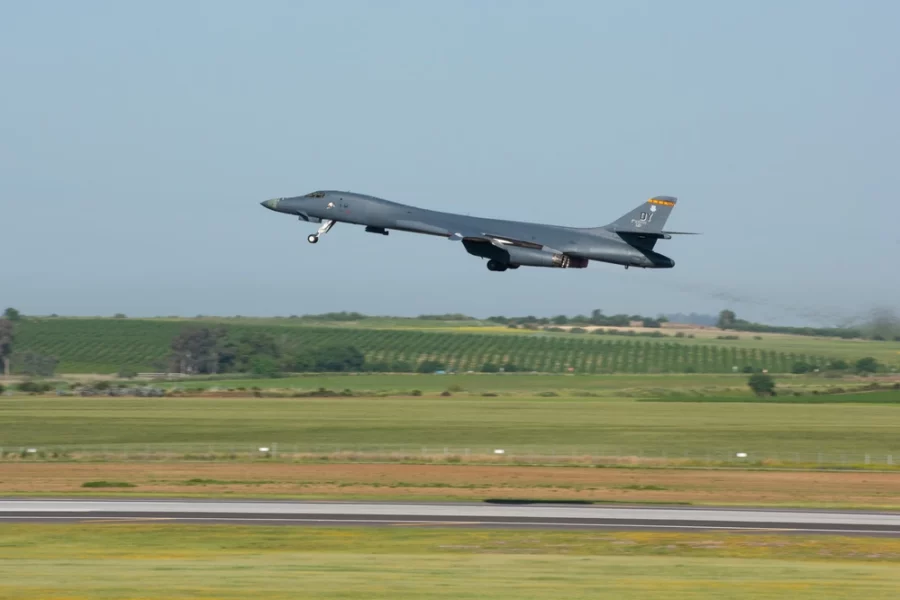Two of the four B-1B Lancers deployed as a Bomber Task Force to Spain last month have been positioned closer to the ongoing conflicts in the Middle East, the Air Force announced, as the aircraft are now exercising in Turkey with that NATO partner’s air force. The U.S. Air Force has supported Israel’s defense against Iranian missile attacks in recent days, shooting down more than 70 Iranian drones with F-15s and F-16s.
The two bombers “flew from their deployed location at Morón Air Base, Spain, to Incirlik Air Base,” Turkey, on April 15, the Air Force said. There they will conduct “a long-planned, routine training mission” as part of Bomber Task Force 24-2.
The Air Force announced the two B-1s had deployed to Spain March 24. The same day, the service announced that two B-52s had deployed to Diego Garcia in the Indian Ocean.
As part of the deployment, “the U.S. aircraft integrated with and trained alongside Turkish fighter aircraft before landing at Incirlik, where the U.S. aircraft are projected to conduct additional training events in coordination with Turkish forces,” the Air Force said. It did not say how long they are expected to remain.
When the B-1s deployed to Spain from Dyess Air Force Base, Texas, their route took them over the Barents Sea, where Reuters reported that Russia scrambled a MiG-31 to intercept the two aircraft, but waved off before reaching the Russian frontier.
This is the second B-1 deployment to Europe this year, as two Lancers from Ellsworth Air Force Base, S.D. deployed in February to Sweden, which was recently admitted to NATO. After exercising with Swedish forces, they returned to Ellsworth in early March.
The pace of BTFs worldwide has increased in the last two years, and as part of the Air Force’s recently announced “re-optimization,” more deployments and major exercises, with and without allies, are expected.
Incirlik is the Air Force’s usual deployment location for aerial tankers, typically detached from RAF Mildenhall, U.K.
The service described BTF-24-2 as “part of Large Scale Global Exercise 2024, an umbrella term that incorporates dozens of separate exercises and military activities under multiple combatant commands, which enables U.S. forces to train with allies and partners to improve shared understanding, trust, and interoperability on security challenges.”
The bombers and support personnel “will conduct a series of missions throughout the BTF 24-2 deployment to train alongside Allies and partners.” These exercises enable “dynamic force employment in the European theater, providing strategic predictability and assurance for Allies and partners while contributing to deterrence by introducing greater operational unpredictability for potential adversaries,” the Air Force said.
Col. Kevin Lord, 39th Air Base Wing commander, thanked “our Turkish hosts for their role in this vital training opportunity and for their ongoing support to our team living and working as part of the Incirlik community.” Bilateral operations and “routine engagement between U.S. and Turkish forces, including these recent bomber task force missions, strengthen our shared commitment to regional security and stability,” he said.
U.S. Air Forces in Europe, “emphasized the importance of partnerships” with the Turkish defense ministry and “how bilateral training contributes to cooperation and shared defense in the region.”
